About Us
Researchers + Clinicians
Parents
The Stillbirth CRE research program addresses priorities across five major program areas.
Our five program areas incorporate cross-cutting themes, including clinician education, increasing community awareness, and health economics.
Through extensive consultation, the Stillbirth CRE has also developed a set of national stillbirth research priorities to inform future research. The most recent report from 2023 outlines these areas and can be accessed here.
Professor Vicki Flenady, Professor Michael Coory
This program area draws on existing and novel systems to gain comprehensive, timely data to improve care to reduce adverse pregnancy outcomes with a focus on perinatal deaths. Knowledge of the causes and contributing factors in stillbirth is crucially important for parents to understand why their baby died and is also the cornerstone of future prevention of stillbirths. Currently, data quality to understand the important contributors for stillbirth is often suboptimal due to under-investigation, inadequate classification and clinical audit of the circumstances surrounding the death.
In partnership with the Perinatal Society of Australia and New Zealand, the Stillbirth CRE undertakes research to enhance protocols for investigations, classification and audit to identify causes and contributing factors to inform prevention strategies. The Stillbirth CRE has linked with the Australian Institute of Health and Welfare (AIHW) through the National Maternal and Perinatal Mortality Advisory Group to optimise future implementation and drive practice and policy change. With international collaborators (through ISA and WHO) it will also inform the development of international solutions
Ongoing monitoring of the impact of the Safer Baby Bundle (SBB) through a clinical dashboard for health care professionals is another key area of the work of this program in partnership with Women’s Hospitals Australasia a SBB clinical dashboard.
Professor Sailesh Kumar, Professor Sue Walker, Professor Vicki Clifton, Professor Adrienne Gordon
Novel tests to improve antenatal detection of women at increased risk of stillbirth are needed. Many of the unexplained stillbirths that occur in high-income countries may be due to problems with how the placenta develops and functions. Such problems may contribute to stillbirth, even in babies who appear to be growing well during pregnancy. By assessing the function of the placenta, it may be possible to predict which babies have a greater chance of stillbirth. We may then be able to intervene before stillbirth occurs.
As well as identifying babies who might be at-risk of stillbirth, assessing the function of the placenta and looking at placental biomarkers may help to detect babies who have an increased chance of experiencing distress during labour. Babies who experience distress during labour are at-risk of developing brain injury and resulting disability, such as cerebral palsy. Therefore, detecting babies who have an increased chance of experiencing distress during labour may help to reduce both stillbirth and childhood disability.
A national placental consortium has been established and monthly webinars are held. To sign up email stillbirthcre@mater.uq.edu.au
Professor Vicki Flenady, Professor Adrienne Gordon, Professor David Ellwood, Dr Christine Andrews
This program area focuses on research to enable informed decision-making in the care of women during pregnancy to avoid stillbirth and other adverse newborn outcomes. It includes implementation and updating of the Safer Baby Bundle to include new research, wide-scale implementation across maternity services, and monitoring of unintended consequences.
The current lack of an individualised evidence-based approach to a woman’s risk status has resulted in concerning increases in early term and late preterm birth.
The Timing of Birth research program aims to improve shared decision making on planned birth to reduce the chance of stillbirth based on the wo mans risk factors.
The Stillbirth CRE has adapted the Safer Baby Bundle to meet the needs of Aboriginal and Torres Strait Islander communities (see Stronger Bubba Born), as well as migrant and refugee women (see Growing a Health Baby) and those living in regional and remote settings.
Associate Professor Fran Boyle, Professor David Ellwood, Dr Siobhan Loughnan
The Care after stillbirth and neonatal death (CaSaND) program area focuses on improving care around the time of stillbirth, and in subsequent pregnancies. The psychosocial impact on mothers and families and society is substantial, yet the care received by parents in Australia is highly variable.
Our studies show parents’ needs are frequently unmet. Parents face many critical decisions following stillbirth and more support and guidance is needed, particularly around autopsy consent. For those embarking on subsequent pregnancies, there is up to a five-fold increased risk of stillbirth. Increased anxiety and fear in subsequent pregnancies is common, yet there is little guidance for clinicians on the optimal clinical care for these women and their families.
The additional economic costs of stillbirth need to be quantified for efficient health service planning.
Based on our strong clinical and research experience in this area including clinical practice recommendations included in our recently updated NHMRC approved guidelines (CASaND Guideline), we will implement best practice on immediate care after a stillbirth or neonatal death and develop a model of best practice in a subsequent pregnancy.
Professor Philippa Middleton, Deanna Stuart-Butler, Associate Professor Miranda Davies-Tuck.
Working with diverse communities to address & reduce inequities. Through three advisory groups, the Stillbirth CRE has now established strong partnerships to support communities in action to reduce stillbirth rates and improve bereavement care for Aboriginal and Torres Strait Islander women, migrant and refugee women and women from regional and remote areas.
Major cross-cutting themes which intersect with the five program areas are:
Clinician Education
Goal: to ensure effective implementation of best evidence into clinical practice.
Increasing Community Awareness
Goal: to increase community awareness and engagement to enhance the response and benefit of all CRE initiatives.
Health Economics
Goal: to assess and support implementation of beneficial interventions.

Level 3, Aubigny Place
Mater Research Institute
Raymond Terrace,
South Brisbane QLD 4101
The University of Queensland Faculty of Medicine